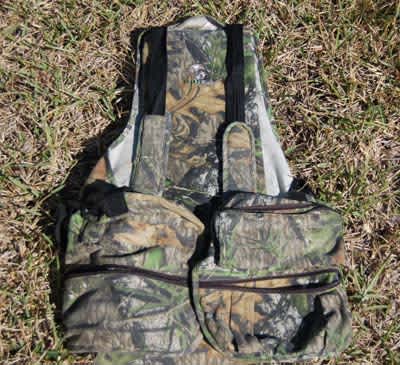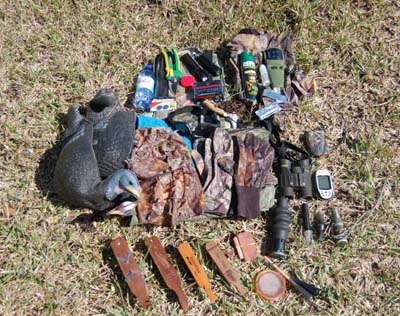What’s in Your Turkey Vest?
Toxie Givens 03.08.12

I know “what’s in your turkey vest?” is a rhetorical question but it makes you think about your own turkey vest and what equipment you have in it. Since there is no way for me to know what you have in your vest, I am going to talk about what’s in my vest and what equipment I use. I got the idea of writing this article when I started to pack my vest for the upcoming season. I am always adding things to my vest especially when I talk to other turkey hunters or watch them in action on TV. I hope this article will help out new turkey hunters and might even offer suggestions to an old veteran hunter that he or she might not have thought of before.
Obviously you need to start with a turkey vest. Turkey vests have evolved from being simple thin-layered vests with a couple of pockets to having zillions of different size pockets hidden all over the place with comfortable flip out seats. Some of the new vests come with instructions to explain where all the pockets are located and what equipment can go in them. This year I have even seen a new vest that comes with mesh materials on the back that you can pull over the top of you to make yourself into an instant portable blind. Wow! What evolution the hunting industry has come up with!
Another must carry for me is my portable GPS. I hunt some big tracts of land and sometimes when I am chasing a gobbler, I can get turned around and can lose my bearing. By having a GPS unit in my vest, I have the confidence to worry about the gobbler instead of constantly worrying about my location.







